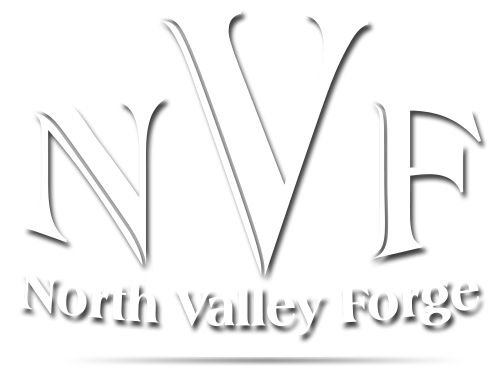When it comes to components for your gates, railings, or other metalwork projects, the terms 'wrought iron' and 'mild steel' are often used interchangeably. But what's the real difference? They're practically the same thing - but with an interesting history and innovation. Let's delve deeper into this.
What exactly is wrought iron?
Wrought iron is one of the oldest metals used in the world, going back thousands of years. It's an alloy that's tough yet malleable, meaning that it can be shaped and worked into beautiful, intricate designs. In fact, the term 'wrought' derives from the word 'worked', since blacksmiths would cut, twist, hammer and bend the iron to create scrolls and arches we associate with traditional iron gates and railings.
But here's the thing - wrought iron isn't used the same way today. What you see labeled as 'wrought iron' is most likely mild steel. This is because actual wrought iron was phased out due to how labour-intensive and expensive it was to produce. Yet, the charm and timeless aesthetic of the designs remain, thanks to modern material.
When Did Wrought Iron Stop Being Used?
Wrought iron was the standard for centuries, up until the mid-20th century. Its use gradually declined after the Industrial Resolution, which brought about easier, faster and cheaper ways to produce metals. By the 1970's wrought iron had pretty much stopped being produced entirely. The switch to mild steel came in full force, especially in the fabrication of gates and railings, where cost-effectiveness and ease of manufacturing were key. So, if you hear someone mention 'wrought iron gates' today, what they're talking about is mild steel that's been made to look just like wrought iron.
Why did Mild Steel Replace Wrought Iron?
Mild steel took over because not only is it stronger but more flexible and much easier to work with than traditional wrought iron. Mild steel contains slightly more carbon than wrought iron allowing it to be shaped more easily. It can also be welded together quickly, making it more efficient to manufacture. Plus, mild steel has an overall cleaner, sleeker look while maintaining the same durability and timeless aesthetic as wrought iron. From a maintenance perspective, mild steel is also a winner. It can be galvanised and powder coated to prevent rust and corrosion, which means less upkeep in comparison to wrought iron.
Why does it matter?
Choosing between 'wrought iron' and mild steel isn't just about looks - it's also about durability and upkeep. Mild steel offers all the benefits of traditional wrought iron without the heavy maintenance that comes with it. You're getting the same sleek, decorative designs that wrought iron is known for, but in a more cost-effective and durable material.
At NVF, we specialise in offering the finest wrought iron components that are actually made of mild steel - so you get the best of both worlds; classic, beautiful designs with modern-day durability. Whether you're after a sleek gate for your home or railings for your garden, you can rest assured that mild steel will give the same traditional, classic look without the drawbacks of traditional wrought iron.
Want to learn more? check out this journal article on the history of wrought iron and why mild steel has become the modern alternative, or see why mild steel is better suited for today's application.






